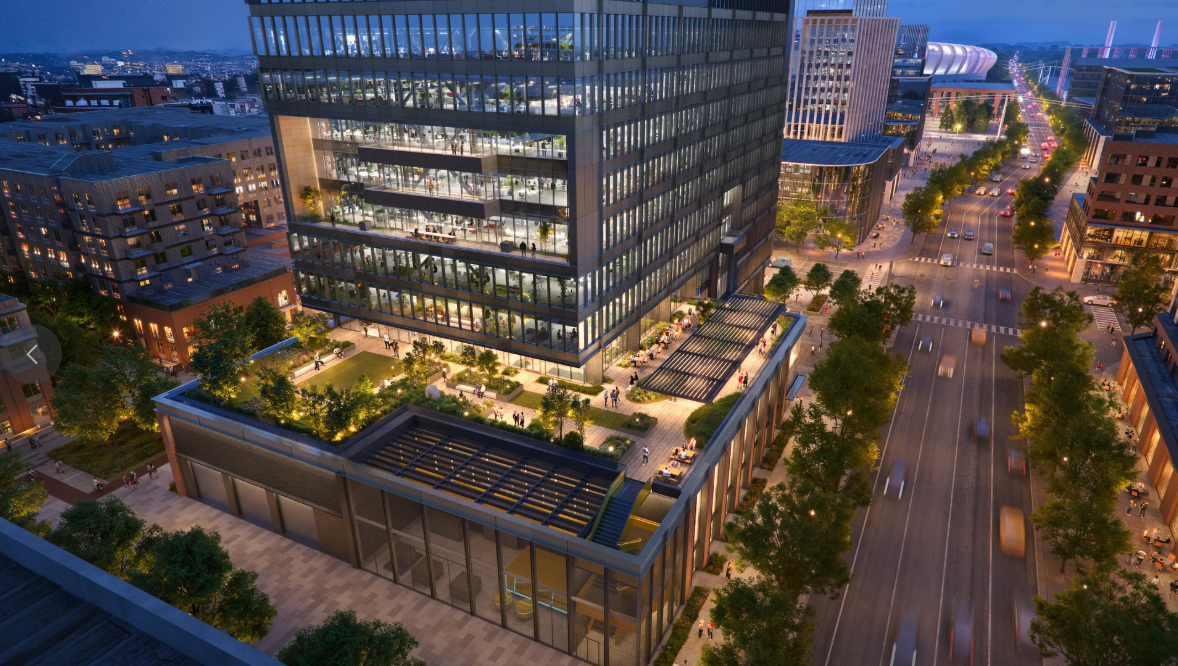

Salt Lake City, Utah — October 27, 2025
Salt Lake City’s downtown officially pushed west this morning as the Larry H. Miller Company broke ground on the first major structure in its 100-acre Power District development — a 10-story, 300,000-square-foot headquarters for Rocky Mountain Power.
The ceremony drew a cross-section of Utah’s public and private leadership—proof that this is more than a construction start. The Power District sits on one of Salt Lake’s most strategically located yet underused corridors, the industrial stretch linking the airport and downtown. Its transformation will test whether westward expansion can deliver on both growth and equity.
“This is a big step forward,” said Salt Lake City Mayor Erin Mendenhall, addressing the large crowd against a dramatic backdrop of power transformer bushings and heavy equipment. “Today marks the beginning of a catalytic investment in this neighborhood that this neighborhood has not only wanted but deserved for a very long time."
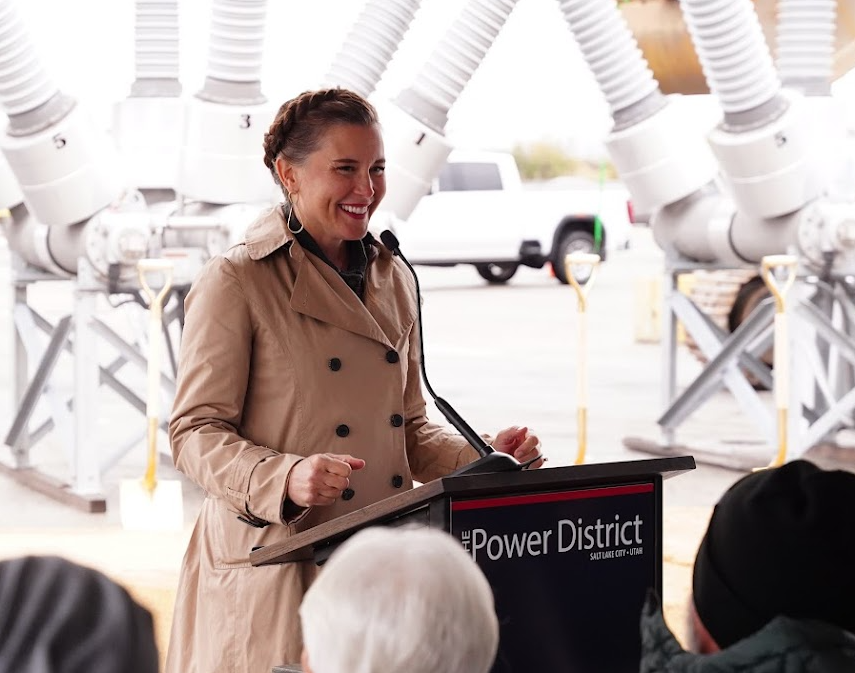
When fully built out, the Power District will include roughly 1.3 million square feet of office space, 4,700 housing units spanning a range of price points, 320,000 square feet of retail, and a 300-room hotel. The master plan also calls for a mile of restored riverfront along the Jordan River, new trails and public spaces, and transit-linked access to both the airport and downtown.
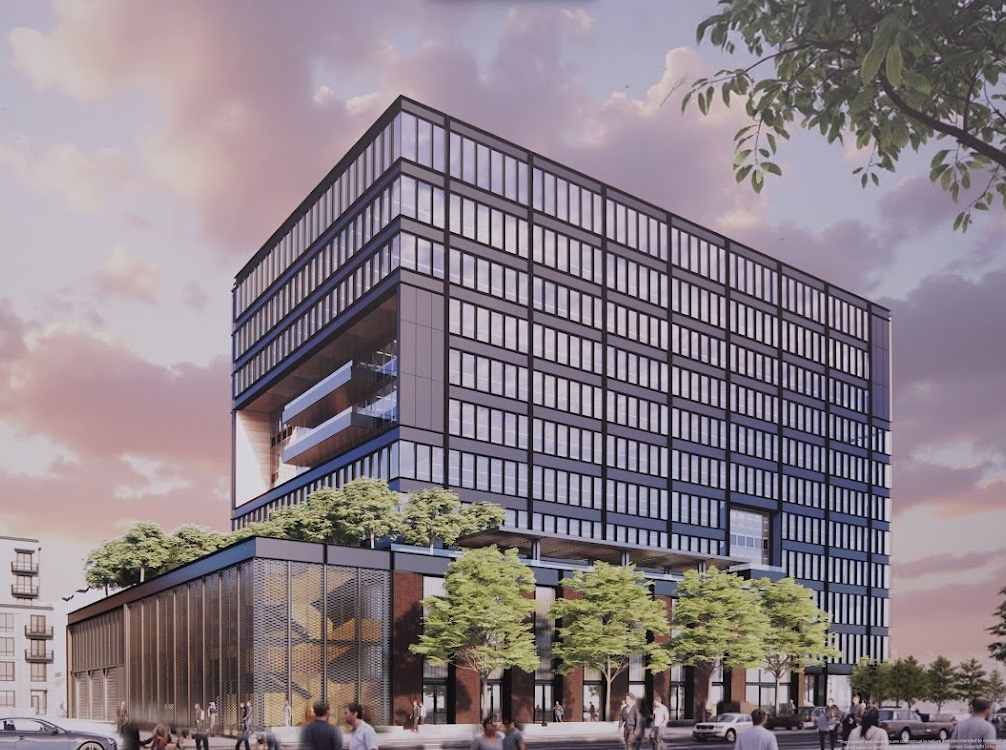
The project would rival Utah County’s Silicon Slopes hub in corporate square footage while adding a density and walkability Salt Lake’s west side has never seen. The district is also being studied as a potential site for a future Major League Baseball stadium, though no decision has been made.
Larry H. Miller Real Estate, the developer behind the project, is touting the district as a “sports and entertainment-anchored mixed-use development.” The firm, part of the larger Larry H. Miller Company, has shifted in recent years from its automotive and sports holdings toward large-scale real estate ventures across the Mountain West.
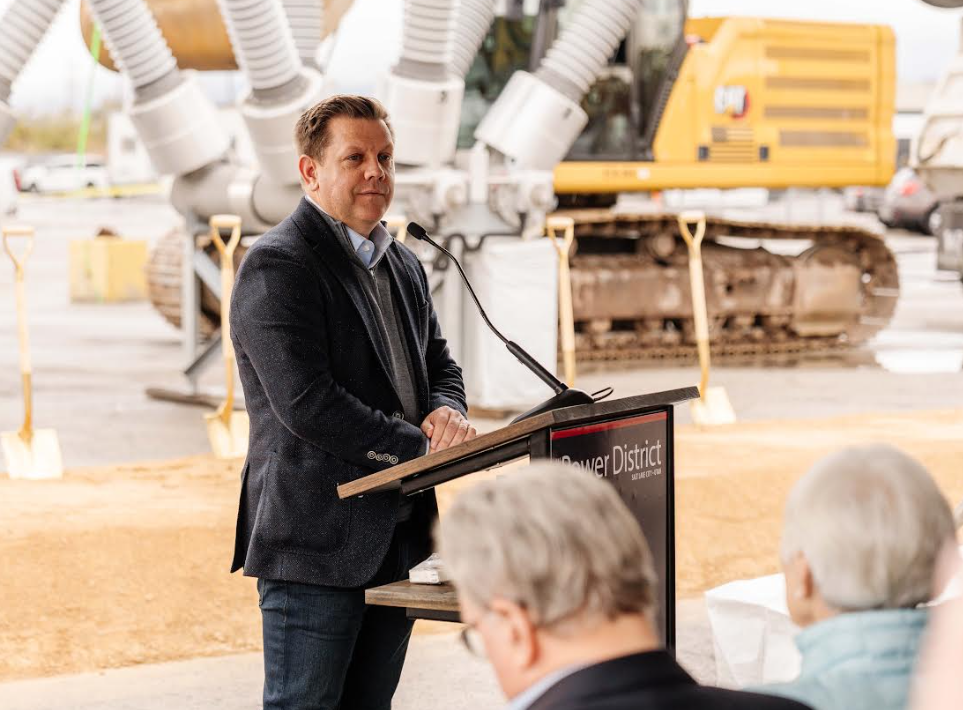
“We are excited to break ground on The Power District’s first building, a 10-story
corporate headquarters for Rocky Mountain Power, that will expand Salt Lake’s skyline to the west,” said Steve Starks, CEO of the Larry H. Miller Company. “There is great momentum in this community, and we are grateful for our many partners who share our commitment to developing this world-class sports and entertainment anchored mixed-use project.”
Senator Scott Sandall, who also serves on the Utah State Fairpark Board, called the Power District “a historic investment in Salt Lake City’s west side community” and “a Utah project, not just a west side project.”
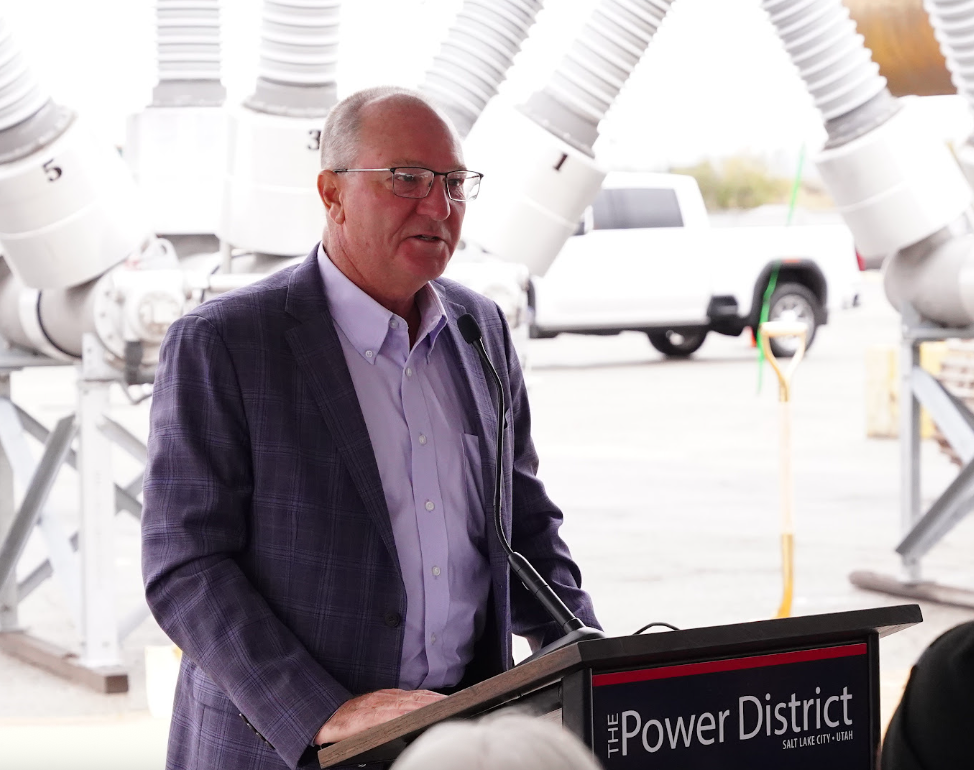
“To have a project with a river running through it is an opportunity to protect our water resources and provide opportunities for recreation,” he said. Senator Sandall credited coordination between the Fairpark, the city, state agencies, and private developers as “unprecedented.”
Mendenhall reinforced that collaboration theme, noting that the city’s FY26 budget allocates $5.5 million to west-side improvements, including capital upgrades, park security, and river-corridor restoration. She cited the city’s partnership with the Utah Transit Authority to expand UTA On Demand service in west-side neighborhoods and a new “Clean City Team” focused on graffiti removal and public-space maintenance.
“This neighborhood has not only wanted but deserved this kind of catalytic investment for a very long time,” the mayor said. “Groundbreakings are celebrations of possibility.”
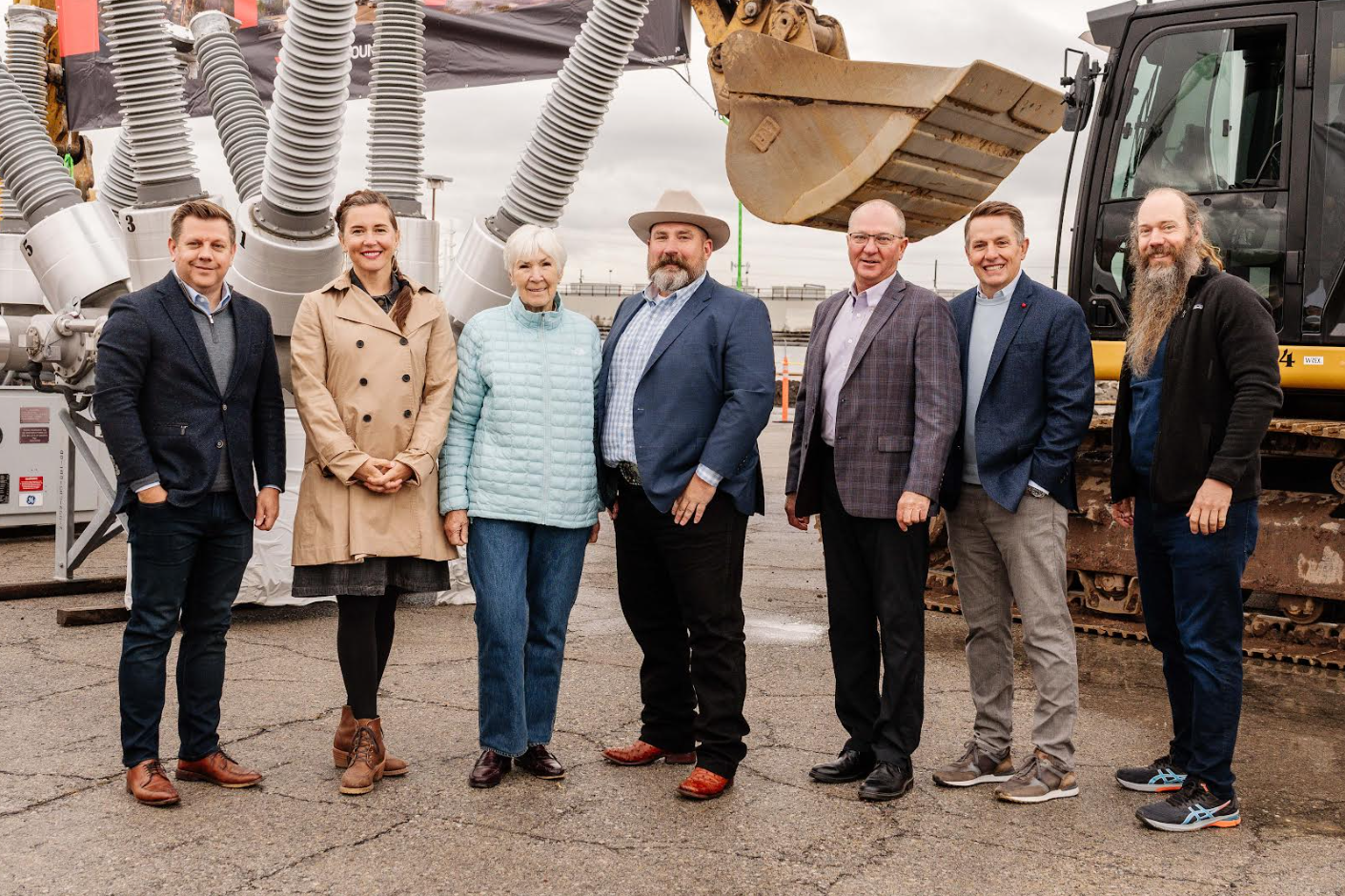
Rocky Mountain Power’s new headquarters will anchor the district and consolidate operations currently spread across several locations. The building, designed by SOM and Architectural Nexus, is expected to open in late 2027. Beyond the corporate real estate, the company is positioning the campus as a sustainability hub — both symbolically and operationally.
The utility is leading a consortium of 19 Utah municipalities, including Salt Lake City, in the Utah Renewable Communities program, a long-term effort to achieve 100% net renewable energy across participating cities. Mendenhall called it “a model for how large utilities and cities can cooperate to power growth without compromising air quality.”
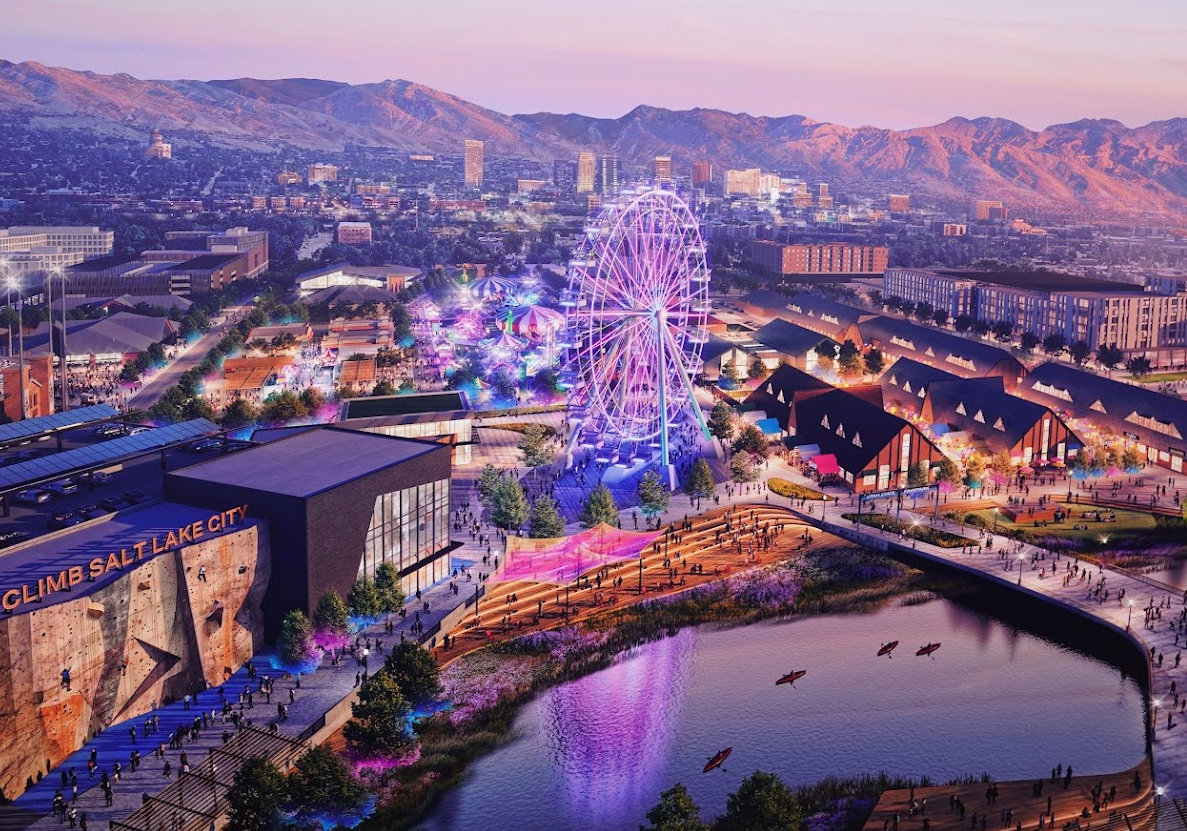
Few areas of the city have borne the effects of pollution more than the west side, which sits downwind of freeway and industrial corridors. “Our entire state needs clean-energy improvements,” she said, “but few places more than the west side of Salt Lake City.”
The Power District represents a generational pivot for the Larry H. Miller Company. After selling its dealerships and NBA franchise, the company has repositioned itself as a real estate and investment enterprise with projects across Utah and Arizona. The Power District is its most ambitious to date — an urban-scale experiment in building a new city core from scratch.
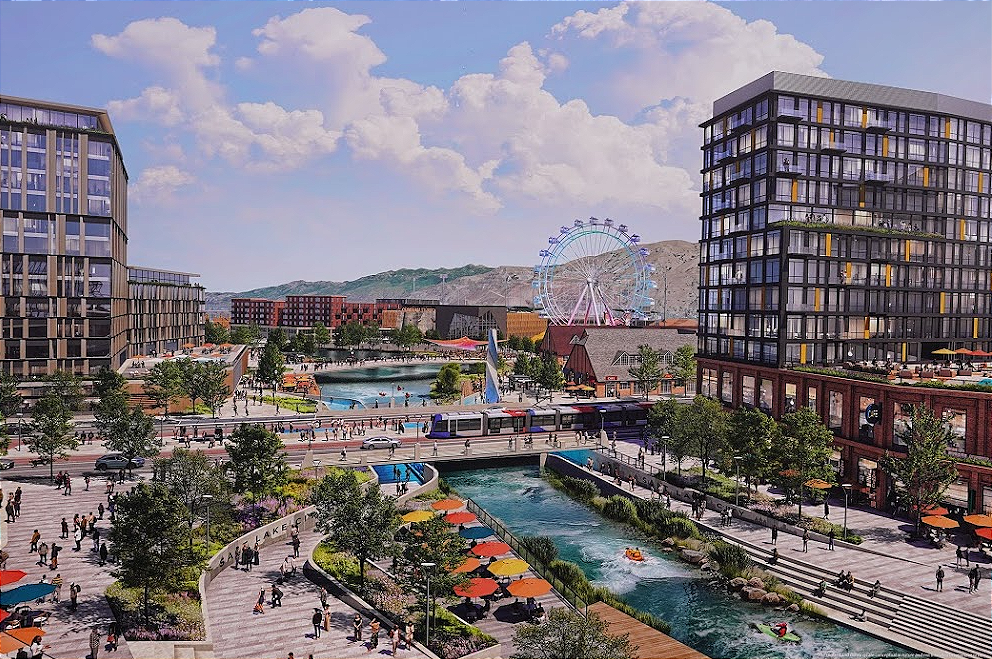
“This development will create thousands of jobs, ignite economic growth, and serve as the gateway neighborhood to Utah’s capital city,” said Steve Miller, chairman of the Larry H. Miller Company, in prepared remarks. “It’s our family’s commitment to Salt Lake City and the state of Utah.”
Brad Holmes, president of Larry H. Miller Real Estate, added that the project is designed to “add a mixture of housing types and price points, including ownership options and family-friendly amenities. “In an area currently devoid of
housing, The Power District will add a mixture of housing types and price points,
including introducing 2-3+ bedroom housing options, opportunities for home
ownership, and family-friendly amenities. This catalytic project allows us to not only enhance the quality of life for residents but also attract opportunities that benefit our great State of Utah with the remediation, enhancement and activation of the Jordan River and its banks.”
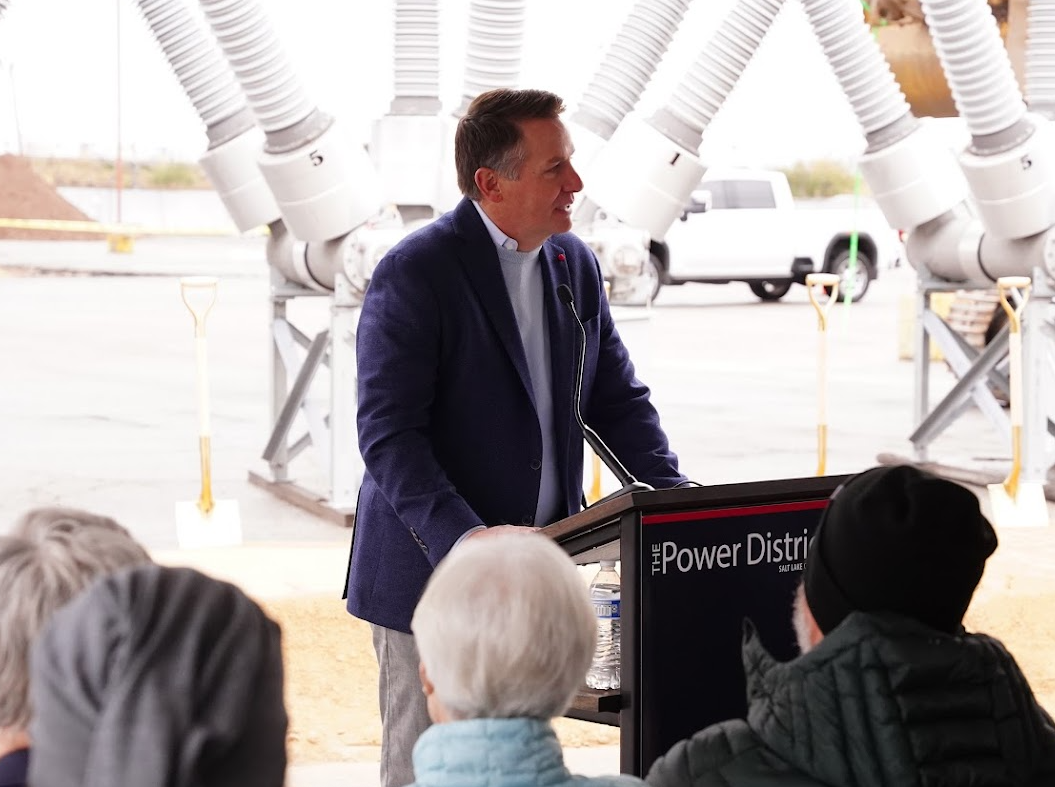
For decades, the west side has existed in the city’s blind spot — an industrial and working-class district separated by I-15 from the civic and commercial core. But demographic shifts, infrastructure investment, and a growing housing crisis have pushed policymakers and developers to look west.
The Power District’s proximity to the airport, combined with its riverfront potential and flexible zoning, make it one of the most strategically placed parcels in the state. It sits at the intersection of several master plans — from the Jordan River Commission’s ecological restoration efforts to the Utah State Fairpark’s modernization goals — all converging into a shared vision for sustainable urban renewal.
“This district has the power,” Mendenhall said, smiling at her own pun. “To fortify the entire west-side community alongside this development.”


